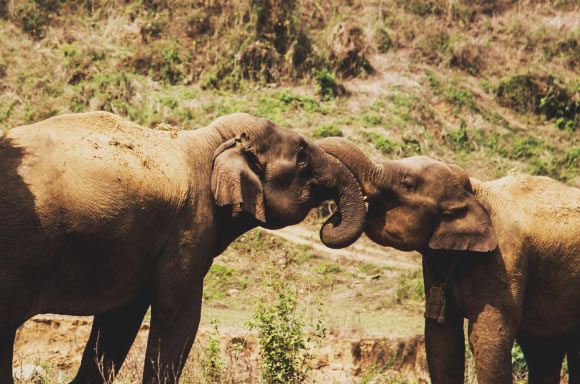Now Reading: Asian Elephants Found to Have Larger Brains Than African Counterparts: Study
-
01
Asian Elephants Found to Have Larger Brains Than African Counterparts: Study
Asian Elephants Found to Have Larger Brains Than African Counterparts: Study

Speedy Summary
- Scientists from Humboldt-Universität zu Berlin and Leibniz Institute for Zoo and Wildlife research studied elephant brain anatomy to identify species differences between Asian and African elephants.
- They found that Asian elephants have larger brains (average 5,300 grams for females) than African elephants (average 4,400 grams for females), despite Asian elephants being physically smaller.
- In males, the data was insufficient to confirm differences in brain size.
- African elephants have proportionally heavier cerebella (22% of total brain weight versus 19% in Asian elephants).
- Elephants exhibit significant postnatal brain growth, with adult brains being three times their birth weight-higher lifetime growth compared to primates except humans.
- Behavioral differences between species are hypothesized to be connected with these anatomical variances; Asian elephants are more amenable to domestication compared to African ones due to differing interactions with humans over millennia.
- The findings may explain varying behavioral traits between the two species’ human interactions and were published in PNAS Nexus.
Images:
- 13007-Loxodonta-africana.jpg”>African Elephants – Kenya-based image by George Wittemyer.
Indian Opinion Analysis
This study underscores significant neuroanatomical distinctions between Asian and African elephant populations, highlighting the profound impact of evolutionary divergence dating back millions of years on both physiology and behavior. For India, which has a large population of domesticated-and also wild-Asian elephants playing culturally significant roles ranging from religious ceremonies to tourism-driven conservation activities, these findings offer intriguing insights into their unique suitability for human interaction.
The research also points toward larger questions relevant globally about how species-specific traits influence conservation strategies or adaptation under human pressures like habitat fragmentation or climate change impacts-a concern particularly acute in regions like India where biodiversity is under strain but certain bonds with wildlife persist strongly within local traditions.
Further exploration into such neurological patterns coudl complement existing conservation efforts while also shaping policies around ethical treatment frameworks given these new behavioral parallels tied directly with brain function dynamics.



























